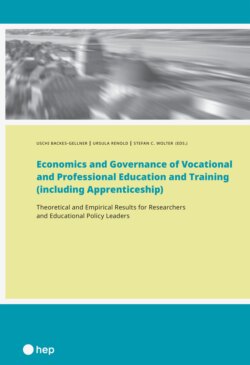Читать книгу Economics and Governance of Vocational and Professional Education and Training (including Apprenticeship) (E-Book) - Uschi Backes-Gellner - Страница 13
На сайте Литреса книга снята с продажи.
Division of Labor
ОглавлениеSmith is regarded as the founder of the concept of the division of labor. Smith distinguished between the invention and implementation of a production process. The former requires an intellectual and the latter a manual effort (Winch, 1998). This attitude can be embodied in educational concepts in that very little education is required for the implementers, and a great deal of education is required for the inventors of new products and processes:
In the progress of the division of labor, the employment of the far greater part of those who live by labor, that is, of the great body of the people, comes to be confined to a few very simple operations; frequently to one or two. But the understandings of the greater part of men are necessarily formed by their ordinary employments. The man whose whole life is spent in performing a few simple operations, of which the effects, too, are perhaps always the same, or very nearly the same, has no occasion to exert his understanding, or to exercise his invention, in finding out expedients for removing difficulties which never occur. He naturally loses, therefore, the habit of such exertion, and generally becomes as stupid and ignorant as it is possible for a human creature to become (Smith, [2012], 1776, p. 777).
Although more than 240 years have passed since the publication of this work, there are still remnants of it found in national education systems, as I will explain in the next section.
